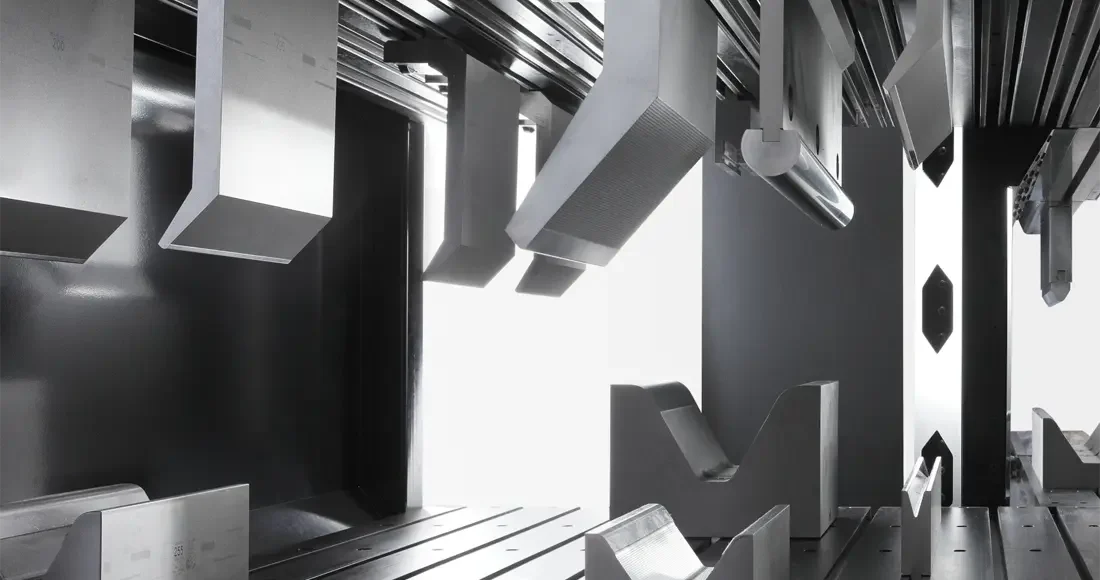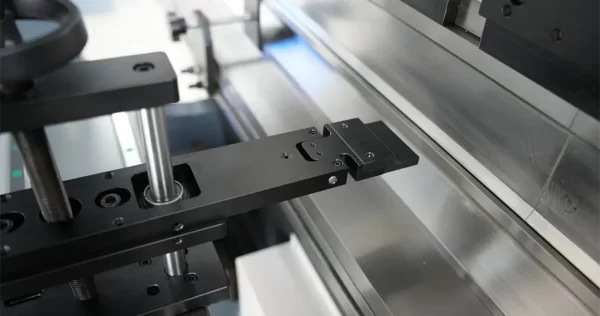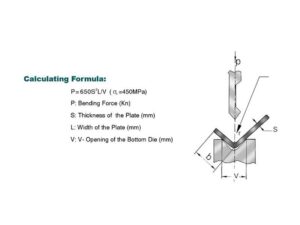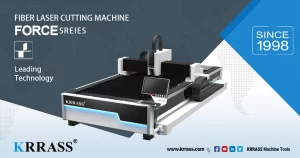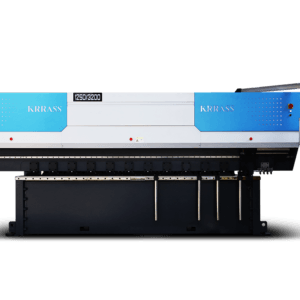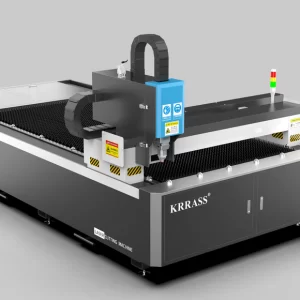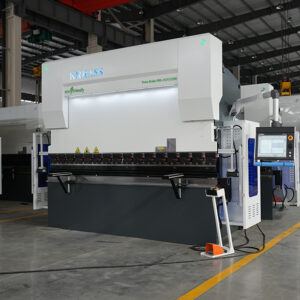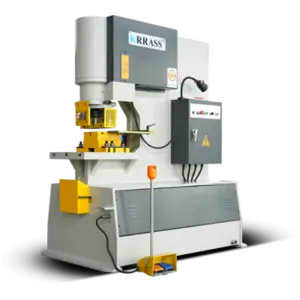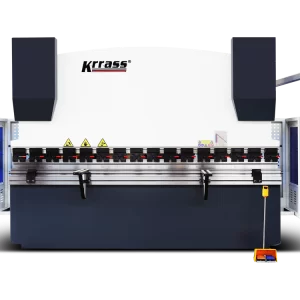Understanding the intricacies of press brake tonnage is crucial for any business involved in metal fabrication. The precision and safety of operations largely depend on getting this right. Whether you’re new to the world of press brakes or seeking a refresher, our comprehensive guide will delve into the factors that influence tonnage, its significance, and how to optimize it for your specific applications.
The components of the bending machine and their influence on the tonnage
How often should I calibrate my press brake for accurate tonnage?
1. What is Press Brake?
A press brake is a specialized machine tool utilized in the metalworking industry. It’s designed to bend sheet and plate material, primarily metal, into customized shapes. By leveraging a matched punch and die set, the press brake exerts controlled force to create desired bends in the material.
In the world of metal fabrication, having an efficient press brake is pivotal. As the backbone of many manufacturing processes, these machines play a crucial role in ensuring precise bends and folds, essential for creating parts that fit seamlessly in machinery, vehicles, buildings, and a plethora of other applications.
The effectiveness of a press brake is largely defined by its press brake capacity or tonnage. Tonnage refers to the maximum amount of force that the machine can exert. Higher tonnage implies a stronger machine capable of bending thicker materials, while a lower tonnage is suitable for more delicate or thinner materials. Knowing the right tonnage is imperative as it impacts the final product’s precision and quality.
From a manufacturer’s perspective, choosing the appropriate press brake and understanding its tonnage is pivotal. It’s not just about sheer power, but about ensuring the machine’s capabilities match the material’s needs, leading to efficient production and high-quality products. And, for businesses looking to make a mark in their industry, understanding the nuances of press brake tonnage is essential.
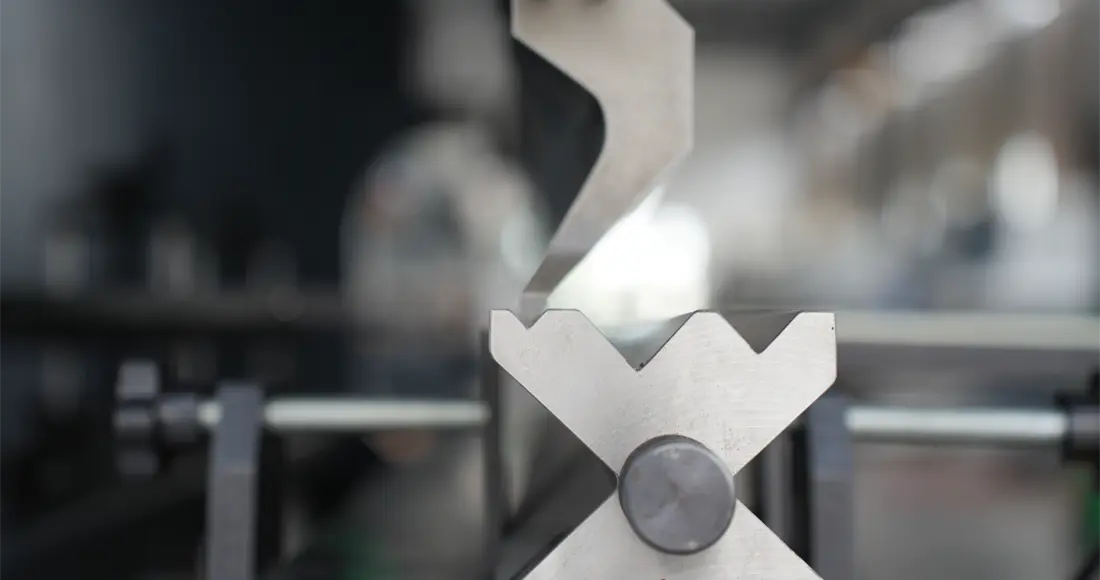
2. Defining Tonnage in the World of Press Brakes
In the realm of metalworking, tonnage carries a specific weight of importance. But what exactly is tonnage when we talk about press brakes?
Tonnage, in simple terms, refers to the total amount of force that a press brake can exert. It’s a measure of the machine’s power and capability. This force, typically measured in tons, determines the machine’s ability to bend, shape, and mold metals of varying thickness and type.
Why is this important? Well, metal sheets and plates aren’t one-size-fits-all. They vary in thickness, alloy, and overall composition. The required force to bend a thin aluminum sheet differs significantly from that of a thick steel plate. Hence, press brake tonnage becomes a critical metric.
Moreover, the tonnage isn’t just a representation of power; it’s also about precision. While excessive force can damage or deform the material, inadequate force won’t achieve the desired bend. This is where the press brake tonnage calculator comes into play. Such calculators help manufacturers gauge the required tonnage for a specific job, ensuring accuracy and minimizing wastage.
3. Materials and Their Influence on Tonnage
When discussing press brakes, understanding the materials being bent is as crucial as knowing the machine itself. The material’s characteristics directly influence the required press brake tonnage. Let’s delve deeper into this relationship.
3.1 Different Metals, Different Needs
Metals, though they might appear similar, can have vastly different properties. For instance, aluminum is softer and more malleable than stainless steel. As a result, bending aluminum requires less tonnage compared to bending a stainless steel sheet of the same thickness. Factors like a metal’s elasticity, malleability, and tensile strength play significant roles in determining the required tonnage.
3.2 How Thickness Dictates Tonnage
Thickness is straightforward: the thicker the material, the more force it needs for bending. But there’s nuance here. Doubling the thickness of a material doesn’t necessarily mean you need double the tonnage. The relationship can be non-linear, with factors like material type coming into play. Generally, a press brake tonnage calculator will consider material type alongside its thickness to provide accurate tonnage estimates.
3.3 Material Grain Direction and its Impact
Metals have a grain direction, much like wood. When force is applied along the grain, metals tend to bend more easily. However, when the force is applied across the grain, more tonnage might be required as bending becomes more resistant. Understanding the grain direction is vital for achieving precise bends without causing cracks or deformities in the metal. Properly aligned bending with the grain direction not only optimizes tonnage but also enhances the finished product’s durability and appearance.
4. The Components of the Bending Machine and Their Influence on Tonnage
A press brake’s efficiency isn’t solely derived from its tonnage. The design and quality of its various components play significant roles. While tonnage defines the power, the components of the machine determine how effectively and precisely this power is used.
4.1 The Ram and Bed
The ram and bed are the primary elements where the bending action happens. The stability and alignment of these components directly influence the tonnage applied. If they are misaligned or unstable, the machine might require more force than anticipated to achieve the desired bend, leading to inefficiencies or inaccuracies.
4.2 Punch and Die
The punch and die’s geometry and material determine the bending process’s effectiveness. A sharper punch requires less tonnage compared to a broader one. Similarly, the die’s opening width also influences the tonnage. A narrower die opening can increase the required tonnage.
4.3 Backgauge System
While the backgauge primarily aids in positioning the metal sheet, its accuracy and efficiency can influence the overall bending process. If a material isn’t positioned correctly, it can lead to uneven bending forces and might require adjustments in tonnage.
4.4 Hydraulic System
The hydraulic system powers the entire operation. If it’s not functioning at its peak or has inconsistencies, the tonnage applied might fluctuate. Regular maintenance and checks ensure that the hydraulic system delivers consistent tonnage as required.
5. Hydraulic vs. Mechanical Press Brakes
The debate between hydraulic press brake and mechanical press brakes has been ongoing for years, each having its own set of advantages and limitations. But which one is superior? Or more aptly, which one is better suited for a particular application? Let’s compare.
5.1 Operation Mechanism
Hydraulic press brakes utilize fluid dynamics, using hydraulic oil to transfer force from the motor to the machine’s ram. This system allows for smoother and more controllable operations. In contrast, mechanical press brakes use a mechanical flywheel to store and transfer energy, leading to a more rapid, but sometimes less controlled, descent.
5.2 Flexibility & Precision
Hydraulic press brakes shine in terms of flexibility. They can handle various tasks and can be adjusted for different force requirements easily. Moreover, they offer a high degree of precision, especially for intricate bends. Mechanical press brakes, on the other hand, are often faster but might lack the same degree of finesse and adjustability.
5.3 Maintenance & Lifespan
Mechanical press brakes, with fewer moving parts, often require less maintenance compared to hydraulic counterparts. However, hydraulic systems, when maintained properly, can have a longer operational lifespan, given their lesser wear and tear during operations.
5.4 Safety
In terms of safety, hydraulic press brakes generally have the upper hand. Their operations are smoother, and emergency stops are more immediate. Mechanical brakes, due to their flywheel mechanism, might not halt as instantaneously, posing a slighter higher safety risk.
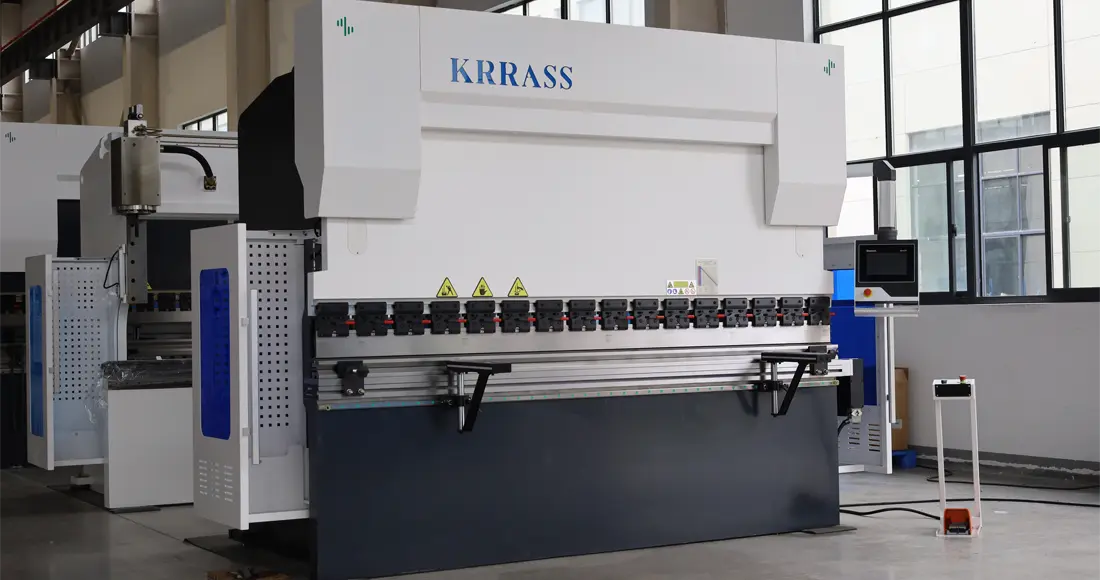
6. Calculating Tonnage Requirements
Understanding how much tonnage is required for a specific bending operation ensures efficiency, accuracy, and safety. Overestimating can lead to wasted energy, while underestimating might result in imperfect bends or even machine damage. Here’s how we break down the calculation.
6.1 The Tonnage Formula Simplified
Tonnage can be estimated using a basic formula: \[ \text{Tonnage} = (\text{Material Thickness} \times \text{Die Opening} \times \text{Material Constant}) / 12 \] Where the “Material Constant” varies based on the type of metal in use (e.g., for steel, aluminum). This formula gives a general idea, but for precise operations, a dedicated press brake tonnage calculator is recommended.
6.2 Factors Influencing Accurate Calculations
Several factors can influence the accurate calculation of tonnage:
Material Properties: The type of metal and its specific characteristics like tensile strength, grain direction, and elasticity can significantly alter the required tonnage.
Bending Length: The longer the bend, the more tonnage you will require, especially if the entire length is bent simultaneously.
Die and Punch Selection: The geometries of the die and punch, including their shapes and widths, play a pivotal role in determining the force necessary for a bend.
Grain Direction: As mentioned earlier, bending along the grain might require different tonnage compared to bending across it.
Considering all these factors in your calculations ensures optimal results, machine longevity, and, most importantly, operator safety.
7. The Role of Die Selection
In the realm of press brakes, die selection isn’t merely about achieving the desired bend; it’s also pivotal in determining the amount of force or tonnage required for the operation. A meticulous selection process not only ensures optimal results but also conserves energy and extends machine lifespan.
7.1 Introduction to Brake Press Dies
Brake press dies are specialized tools used in conjunction with the press brake to bend and shape metal sheets. They come in various shapes and sizes, catering to different bend angles, radii, and metal thicknesses. Common types include the V-die, rotary bending die, acute angle die, and gooseneck die, among others.
7.2 How Die Geometry Influences Tonnage Needs
The geometry and size of the die have a direct impact on the tonnage requirement:
V-Die Width: A general rule of thumb is that the wider the V-opening of the die, the less tonnage is required. Conversely, a narrow V-opening increases the tonnage needed.
Die Material: Harder die materials might require more tonnage than softer ones, given their resistance to deformation.
Die Shape: Different shapes, whether acute angles or more obtuse ones, can vary the tonnage. For instance, an acute-angle die typically demands more force compared to a simple V-die due to its geometry.
Bend Radius: If a smaller bend radius is desired, a die that supports such a feature will be chosen, but this often requires higher tonnage due to the increased material resistance.
The right die, tailored to the specific task and material at hand, ensures that the operation runs smoothly, efficiently, and produces the desired result without exerting undue stress on the press brake.
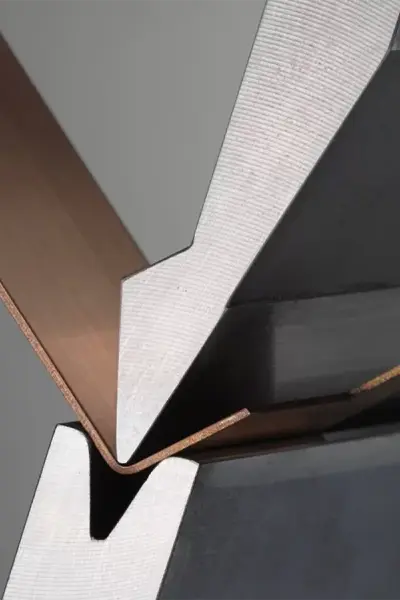
8. Safety Considerations in Tonnage
When it comes to operating heavy machinery, especially press brakes, safety should always be a priority. Incorrect tonnage settings can not only damage the machine and produce faulty products but also pose severe threats to the operator. Here’s a deeper dive into the safety implications tied to tonnage.
8.1 Risks of Overloading a Press Brake
Overloading a press brake, whether unintentionally or in an attempt to achieve a more aggressive bend, can have dire consequences:
Equipment Damage: Consistently operating beyond the machine’s capacity can lead to wear and tear, significantly reducing its lifespan.
Compromised Product Quality: Overloading can result in imprecise bends, warping, or even material breakage.
Operator Safety: Excessive force can cause the machine to malfunction, leading to accidents, injuries, or even fatalities.
Economic Implications: Damage to the machine means costly repairs and potential production downtime.
Using a press brake tonnage calculator and adhering to the machine’s specifications is crucial to mitigate these risks.
8.2 The Importance of Regular Maintenance and Calibration
Routine maintenance and calibration aren’t just about ensuring the longevity of the machine; they’re pivotal for safe operations:
Early Detection: Regular checks can identify potential issues before they escalate into more severe problems, preventing unexpected malfunctions during operations.
Accurate Tonnage Settings: Calibration ensures that the machine’s settings are accurate, reducing the risk of overloading or underloading.
Operator Assurance: A well-maintained machine gives operators confidence in its performance and safety.
Consistent Product Quality: Regular maintenance ensures consistent and high-quality bends, avoiding rework or wastage.
In essence, the health of a press brake is directly proportional to its safety. Thus, investing in its maintenance is investing in the safety of the operator and the overall production process.
9. How Application Impact Tonnage Decisions
The application for which a press brake is used isn’t just a side note—it’s often central to determining the tonnage requirements. Different tasks demand varied force levels, making it essential to understand how specific applications influence these tonnage decisions. Let’s take a closer look.
9.1 Application Varieties and Tonnage
Various applications in metalworking will have different bending requirements. From the aerospace sector to automotive industries, the nature of the bend will vary, impacting tonnage:
Aerospace: This sector often demands precise and delicate bends, especially for thin, high-strength materials, requiring specific tonnage.
Automotive: Automotive parts can range from light to heavy, making it essential to adjust the tonnage according to the component being produced.
Construction: Given the structural demands in construction, the bends are usually robust, and tonnage might need to be on the higher side for thicker metals.
Consumer Goods: Depending on the end product, tonnage might vary. For instance, electronic casings might require less tonnage than home appliances.
It’s clear that understanding the specific needs of an application is crucial to determining the right tonnage.
9.2 The Influence of Production Volume
Not only the nature of the bend but also the production volume can influence tonnage decisions:
Mass Production: For large-scale manufacturing, consistent tonnage is crucial to ensure that every piece is uniform. In such cases, it’s essential to ensure the press brake can handle prolonged operations without deviations in tonnage.
Custom Production: Custom jobs might require varying tonnage within a short time frame, emphasizing the need for adaptable machinery.
Regardless of volume, ensuring the correct tonnage for each application ensures the longevity of the machine and the quality of the product.
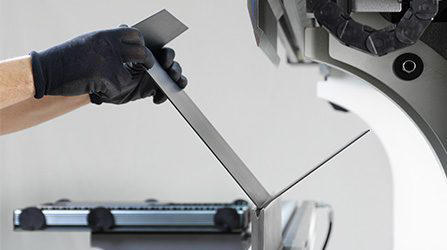
10. How often should I calibrate my press brake for accurate tonnage?
Ensuring that your press brake is calibrated correctly is imperative for maintaining the precision and safety of operations. The frequency of calibration plays a pivotal role in maintaining optimal performance, preventing mishaps, and ensuring the consistency of the produced parts. But the question arises, how often should this calibration be done?
10.1 Calibration Based on Usage
The frequency of calibration is often tied to how much the machine is used:
- Heavy Usage: For press brakes that are in constant use, especially in high production environments, calibration should be performed more frequently – typically, every 3 to 6 months.
- Occasional Usage: Machines used sporadically may require calibration every 6 to 12 months.
- Light Usage: For press brakes that are rarely used, an annual calibration check may suffice.
10.2 Signs That Indicate a Need for Calibration
While a regular schedule is crucial, there are tell-tale signs that might indicate your press brake requires an immediate calibration:
- Inconsistent Bends: If the press brake starts producing varying bends for similar jobs, it could be a sign that the machine is out of calibration.
- Machine Strain: Unusual noises or visible strain during operations can signal calibration issues.
- Product Rejections: A spike in product rejections due to poor quality bends often suggests calibration discrepancies.
10.3 Calibration as a Preventive Measure
Rather than waiting for issues to arise, treating calibration as a preventive measure can help in maintaining consistent quality and preventing potential downtimes. Regularly scheduled calibration checks can foresee and correct minor discrepancies before they escalate into significant problems.
Conclusion
In the vast realm of metal fabrication, ensuring the correct tonnage for your press brake operations is fundamental to achieving quality and efficiency. As you embark on your journey, always remember that expertise and reliable equipment are the pillars of success. At Krrass, as leading press brake and sheet metal machine manufacturers, we pride ourselves on offering solutions that cater to your every need. Partner with us to elevate your metalworking operations to new heights of precision and excellence.
Read More:
Press Brake Parts: Guide to Structure and Components
Hydraulic Press Brake: In-Depth Look
Precautions for The Use of CHINA CNC PRESS BRAKE
How to choose a Hydraulic Press Brake?
Enhancing Accuracy in China Press Brake Bend Calculations: Factors and Solutions

